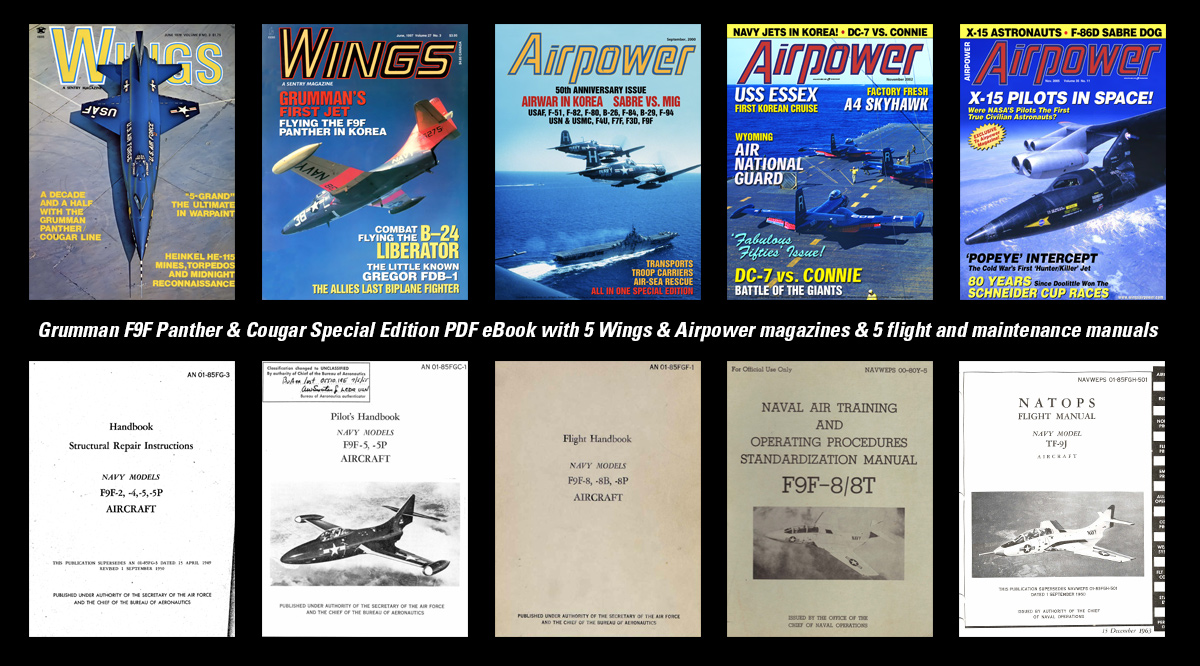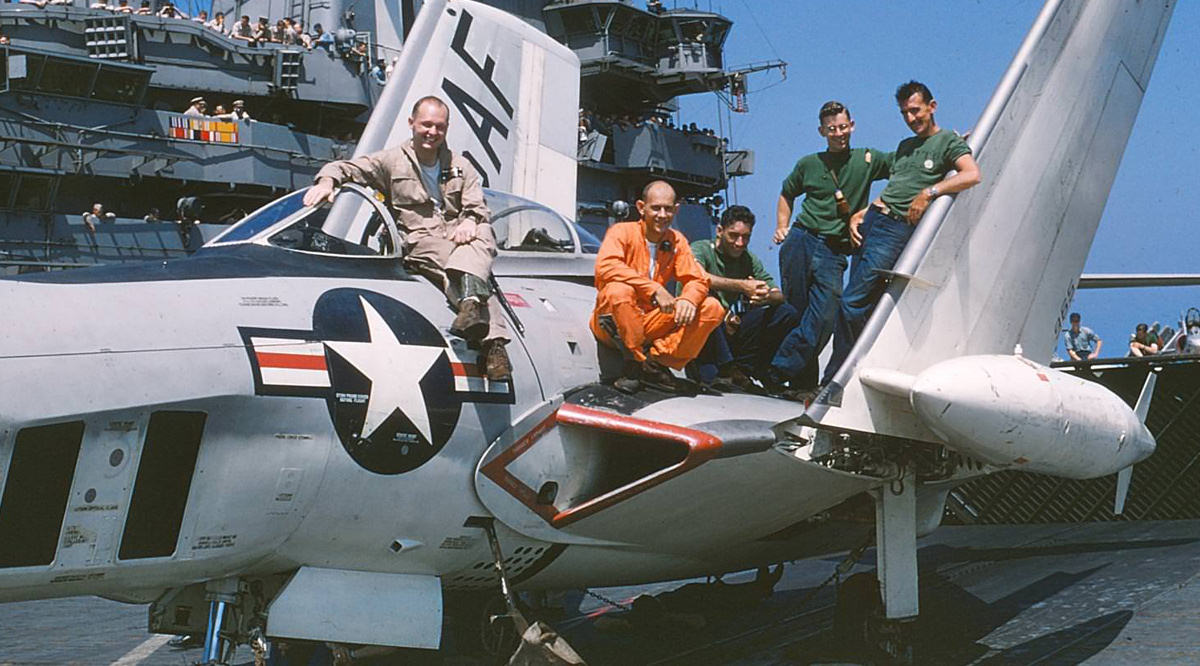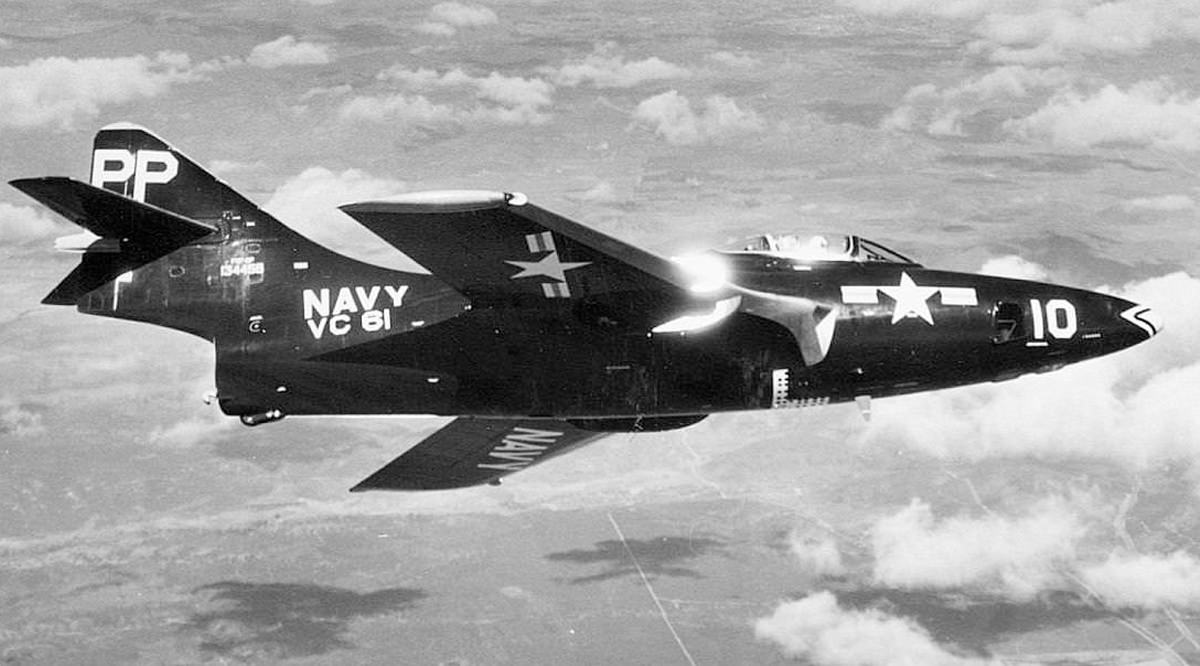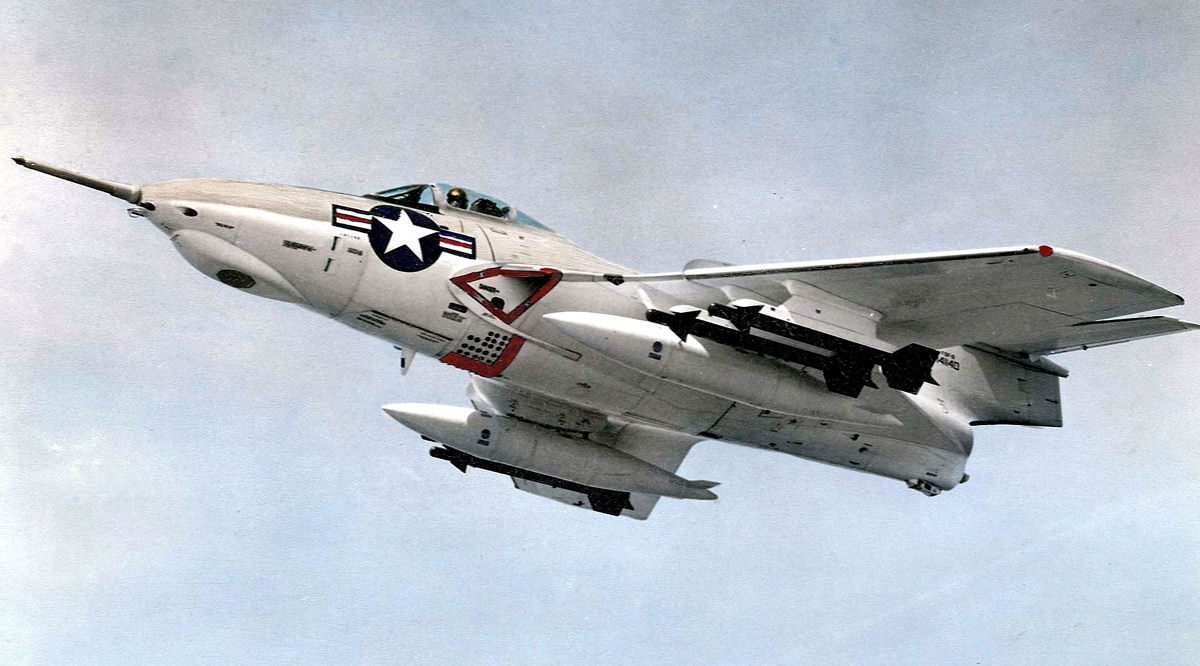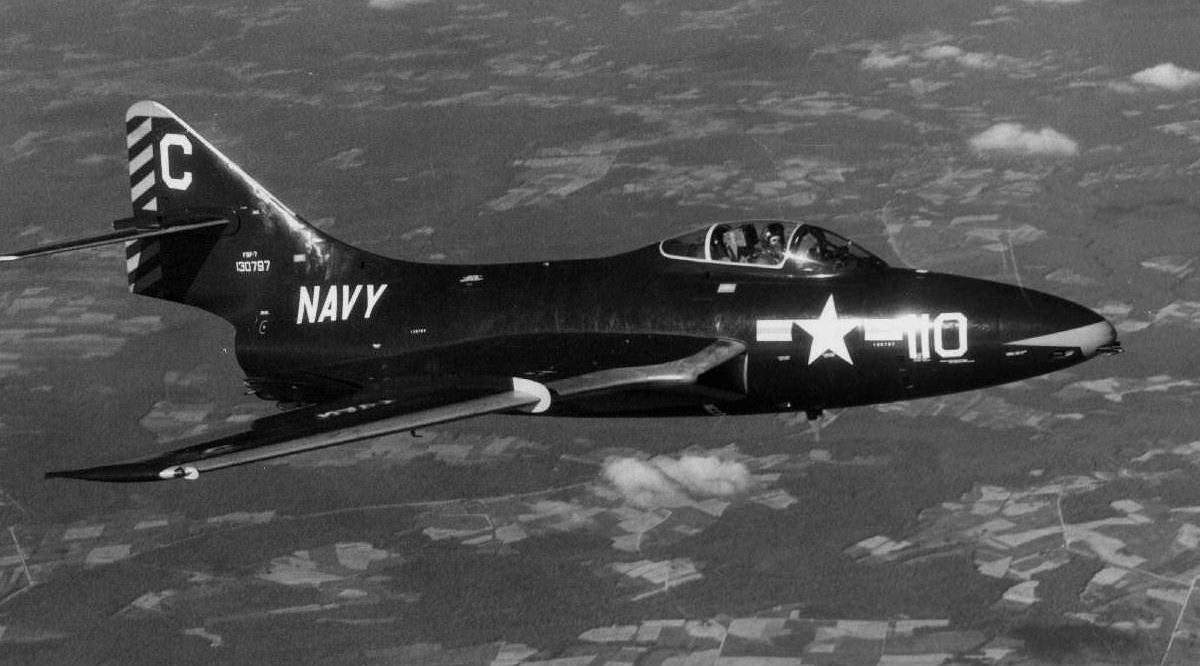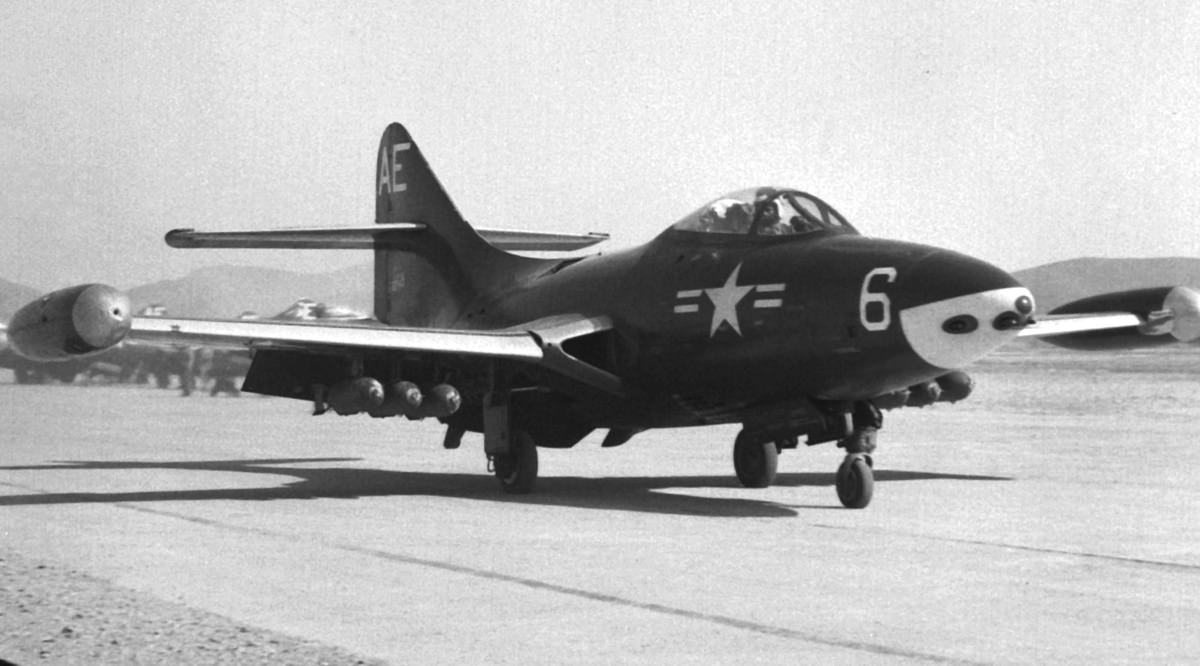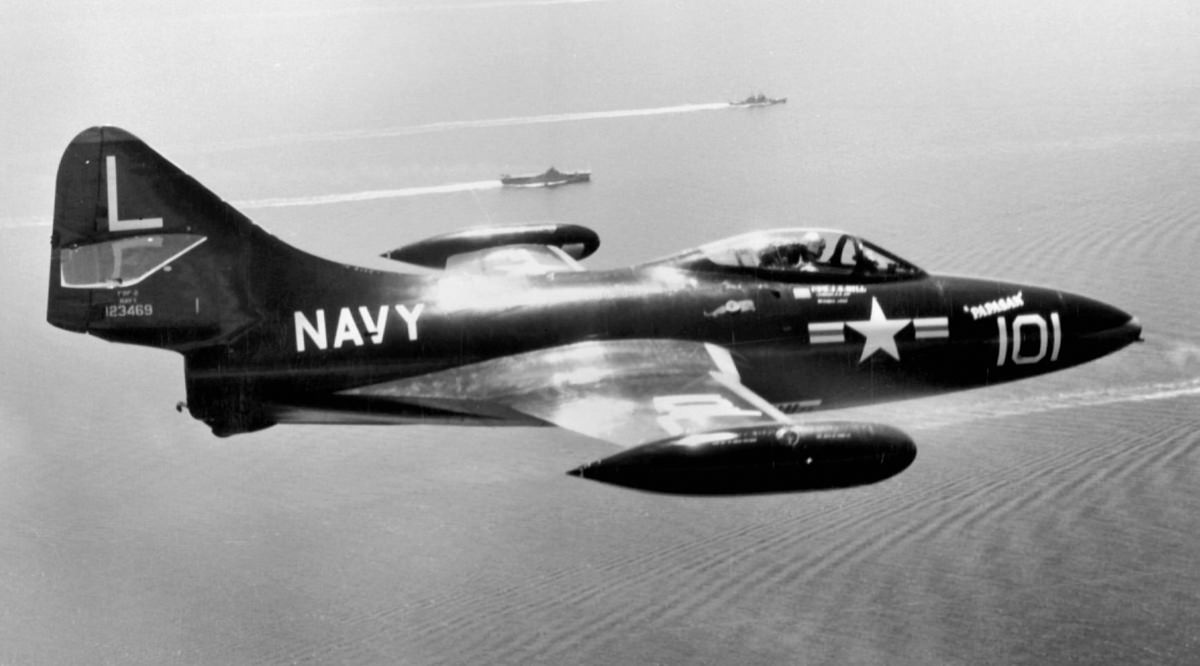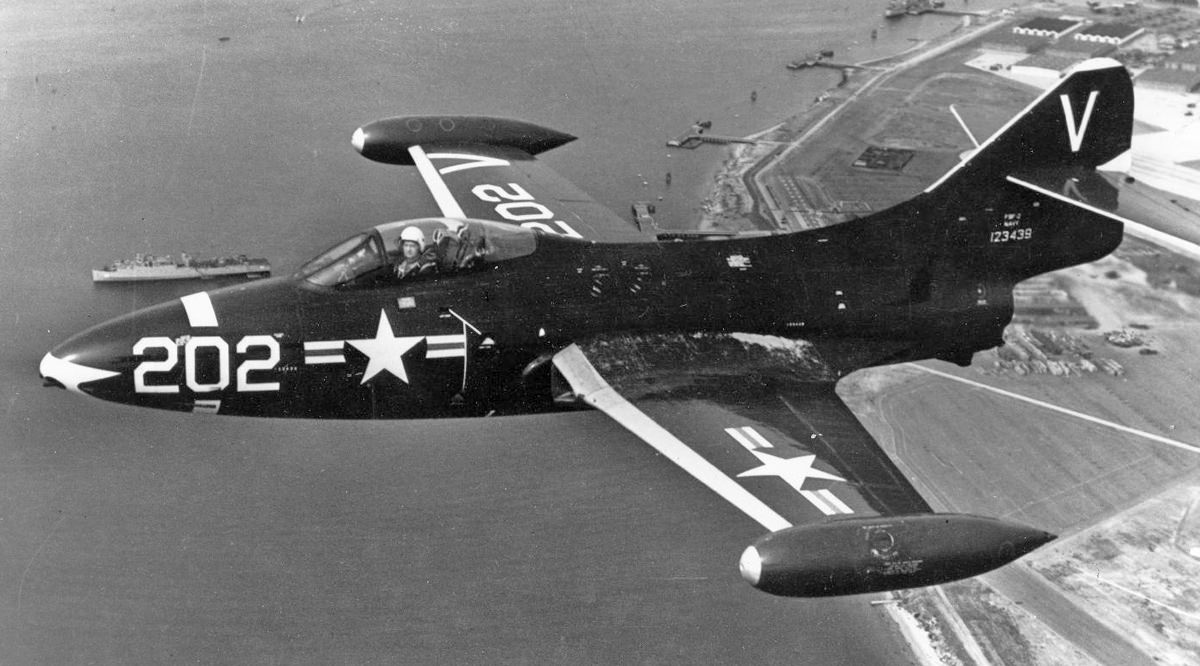Price: $19.95
- 5 magazines, 5 manuals, & photos
- PDF contains 1,432 pages
- Content is keyword searchable
- Print a personal copy
- Pay via PayPal or Credit Card
- International orders welcome!
- Download files upon payment
June 1978
- Grumman Panther / Cougar Line
- “5-Grand” The Ultimate in Warpaint
- Heinkel He-115 Mines, Torpedos, and Midnight Reconnaissance
June 1997
- Grumman’s First Jet, Flying the F9F Panther in Korea
- Combat Flying the B-24 Liberator
- The Gregor FDB-1, the Allies Last Biplane Fighter
November 2002
- USS Essex: First Korean Cruise
- A-4 Skyhawk: Factory Fresh
- Wyoming Air National Guard
- DC-7 vs. Connie: Battle of the Giants
- Fabulous Fifties Issue!
September 2000
- Air War in Korea – Sabre vs. MIG
- Transports, Troop Carriers, and Air-Sea Rescue
November 2005
- X-15 Pilots in Space – Were NASA’s Pilots the First True Civilian Astronauts?
- ‘Popeye’ Intercept – The Cold War’s First Hunter/Killer Jet
- 80 Years since Doolittle won the Schneider Cup Races
- F-86D Sabre Dog
Manuals & Photos
- F9F-2 Structural Repair Handbook, 1954
- F9F-5 -5P Pilot’s Handbook, 1955
- F9F-8 Flight Handbook, 1958
- F9F-8 Operating Procedures, 1961
- TF-9J Flight Manual, 1963
- Over 440 photos of the F9F Panther & Cougar
Grumman F9F Panther & Cougar
F9F-2 Panther
F9F-6/F-9F Cougar
F9F Cougar Cutaway
Videos
General Characteristics
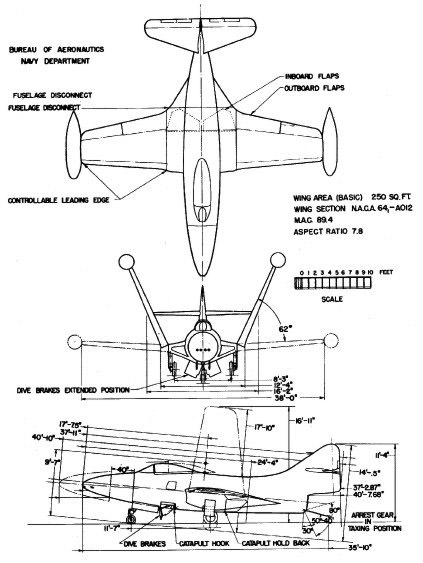
- Crew: 1
- Length: 37 ft 5 in (11.3 m)
- Wingspan: 38 ft 0 in (11.6 m)
- Height: 11 ft 4 in (3.8 m)
- Wing area: 250 ft² (23 m²)
- Empty weight: 9,303 lb (4,220 kg)
- Loaded weight: 14,235 lb (6,456 kg)
- Max. takeoff weight: 16,450 lb (7,462 kg)
- Powerplant: 1 × Pratt & Whitney J42-P-6/P-8 turbojet, 5,950 lbf (26.5 kN) with water injection
Performance
- Maximum speed: 500 kn (575 mph, 925 km/h)
- Range: 1,353 mi (1,175 nmi, 2,177 km)
- Service ceiling: 44,600 ft (13,600 m)
- Rate of climb: 5,140 ft/min (26.1 m/s)
- Wing loading: 71 lb/ft² (350 kg/m²)
- Thrust/weight: 0.42
Armament
- Guns: 4 × 20 mm (0.79 in) AN/M3 cannon, 190 rpg
- Hardpoints: Underwing hardpoints and provisions to carry combinations of:
- Rockets: 6 × 5 in (127 mm) rockets on underwing hardpoints
- Bombs: 2,000 lb (907 kg) of bombs
Variants
- XF9F-2 – The first two prototypes
- XF9F-3 – The third prototype
- F9F-2 – First production version, powered by Pratt & Whitney J42 engine.
- F9F-2B – Version fitted with underwing racks for bombs and rockets. All F9F-2s were eventually so modified, and the B designation was dropped.
- F9F-2P – Unarmed photographic reconnaissance version used in Korea.
- F9F-3 – Allison J33 powered version produced as insurance against the failure of the J42, 54 built. All converted to J42 power later.Redesignated F-9B in 1962.
- XF9F-4 – Prototype used in the development of the F9F-4.
- F9F-4 – Version with longer fuselage with greater fuel load and powered by J33 engine. Most re-engined with J42s. F9F-4s were the first aircraft to successfully employ pressurized bleed air, tapped from the engine’s compressor stages, and blown across the surface of the slot flaps, simulating a higher airspeed across the control surface, and thus achieving a decrease in stalling speed of 9 kn for takeoff and 7 kn on power approach for landing.Redesignated F-9C in 1962.
- F9F-5 – Variant of F9F-4, but powered by Pratt & Whitney J48 engine, 616 built.Redesignated F-9D in 1962.
- F9F-5P – Unarmed photo-reconnaissance version, 36 built, longer nose.Redesignated RF-9D in 1962.
- F9F-5K – After the F9F Panther was withdrawn operational service, a number of F9F-5s were converted into unmanned target drone aircraft.Redesignated QF-9D in 1962.
- F9F-5KD – As drone directors for the F9F-5K drones. Redesignated DF-9E in 1962.
On Display
Argentina – On display
- F9F-2B
- 0421/3-A-106 (Argentine Navy) – Gate guardian at Puerto Belgrano Naval Base (Base Naval Puerto Belgrano – BNPB) at Bahía Blanca, Argentina.
- 0425/3-A-113 (Argentine Navy) – Being restored at Argentine Naval Aviation Museum (Museo de la Aviacion Naval – MUAN) at Bahía Blanca, Argentina.
- 0452/3-A-111 (Argentine Navy) – Gate guardian at Punta Indio Naval Air Base (Base Aeronaval Punta Indio – BAPI) near La Plata, Argentina.
- 0453/3-A-118 (Argentine Navy) – Displayed at National Naval Museum (Museo Naval de la Nación) at Tigre, Argentina.
United States – Airworthy
- F9F-2B
- 123078 Cavanaugh Flight Museum in Addison, Texas.
-
United States – On display
- F9F-2
- 123050 – National Naval Aviation Museum at Naval Air Station Pensacola, Florida.
- 123557 – VFW Post 1621 in Janesville, Wisconsin.
- 123612 – NAS Oceana Air Park, Naval Air Station Oceana, Virginia.
- 123652 – Flying Leatherneck Aviation Museum, Marine Corps Air Station Miramar, California.
- 125183 – Pima Air & Space Museum, adjacent to Davis-Monthan AFB in Tucson, Arizona.
- 127120 – Wings of Freedom Aviation Museum at the former NAS JRB Willow Grove in Horsham, Pennsylvania.
- F9F-2B
- 123526 – National Museum of the Marine Corps, adjacent to Marine Corps Base Quantico in Triangle, Virginia.
- F9F-4
- 125180 – Lion’s Park in Costa Mesa, California.
- F9F-5
- bureau number unknown (incorrectly marked as 141136) – USS Midway Museum in San Diego, California
- 125295 – Valiant Air Command Warbird Museum at Space Coast Regional Airport in Titusville, Florida.
- 125992 – Aviation Heritage Park in Bowling Green, KY.
- 126226 – Combat Air Museum adjacent to Forbes Air National Guard Base at Topeka Regional Airport / Forbes Field (former Forbes AFB) in Topeka, Kansas.
- 126275 – Battleship Memorial Park in Mobile, Alabama.
- F9F-5P
- 126277 – The Air Museum, Planes of Fame, in Chino, California
-
United States – Under restoration or in storage
- F9F-2
- 123054 – under restoration at Yanks Air Museum in Chino, California.
- 123092 – in storage for restoration at USS John F. Kennedy Museum in North Kingston, Rhode Island.
- 123420 – in storage at Fantasy of Flight in Polk City, Florida.
- F9F-5
- 125467 – in storage by Dale James in Bulverde, Texas.
General Characteristics
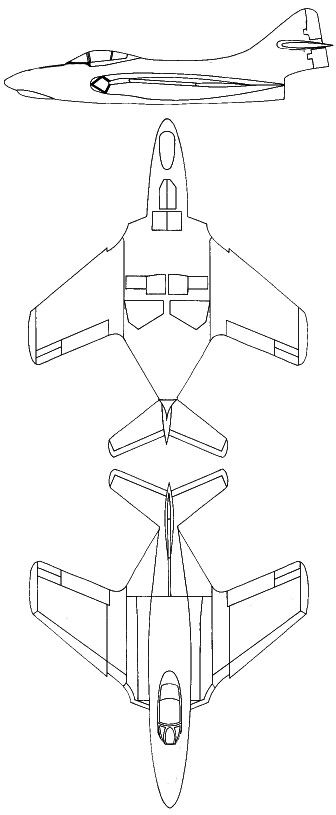
- Crew: 1
- Length: 40 ft 11 in (12.47 m)
- Wingspan: 34 ft 6 in (10.52 m)
- Height: 12 ft 4 in (3.76 m)
- Wing area: 300 ft² (27.87 m²)
- Empty weight: 11,483 lb (5,209 kg)
- Loaded weight: 16,244 lb (7,368 kg)
- Max. takeoff weight: 21,000 lb (9,525 kg)
- Fuel capacity: 919 US gallons (3,480 L)
- Powerplant: 1 × Pratt & Whitney J48-P-8A turbojet, 7,250 lbf (38 kN)
Performance
- Maximum speed: 654 mph at loaded weight (568 knots, 1,051.9 km/h)
- Cruise speed: 541 mph (470 knots, 870.4 km/h)
- Range: 932 mi (810 nmi, 1,500 km) without additional tanks
- Service ceiling: 44,500 ft (13,564 m)
- Rate of climb: 6,750 ft/min at loaded weight (34.3 m/s)
- Wing loading: 61 lb/ft² (300.3 kg/m²)
Armament
- Guns: 4 × 20 mm (0.79 in) AN/M3 cannon, 190 rounds per gun
- Rockets: 6 × 5 in (127 mm) rockets
- Missiles: 4 × AIM-9 Sidewinder air-to-air missiles
- Bombs: 2 × 1,000 lb (454 kg) bombs on inboard pylons plus 2 x 500 lb (227 kg) bombs on outer pylons
Variants
- XF9F-6 – First three prototypes of the F9F Cougar
- F9F-6 – 646 built; redesignated F-9F in 1962.
- F9F-6P – 60 were built for reconnaissance; ;later redesignated RF-9J
- F9F-6D – drone directors, converted from F9F-6s; redesignated DF-9F in 1962.
- F9F-6K – unmanned drones for combat training, converted from F9F-6s; redesignated QF-9F in 1962.
- F9F-6PD – drone directors, converted from F9F-6Ps; redesignated DF-9F in 1962.
- F9F-6K2 – an improved version of the F9F-6K target drone, converted from F9F-6s; redesignated QF-9G in 1962.
- F9F-7 – 168 were built with the Allison J33 engine; most were converted to take J48s; redesignated F-9H in 1962.
- F9F-8 – 601 aircraft; redesignated F-9J in 1962; they had up to 4 AIM-9 Sidewinder missiles
- YF9F-8B – Prototype for a single-seat attack-fighter aircraft converted from a F9F-8; later redesignated YAF-9J.
- F9F-8B – F9F-8s converted into single-seat attack-fighters; later redesignated AF-9J.
- F9F-8P – 110 photo-reconnaissance versions; later redesignated RF-9F.
- YF9F-8T – one F9F-8 aircraft converted into a prototype for the F9F-8T training aircraft; later redesignated YTF-9J.
- F9F-8T – 377 two-seat trainers acquired; redesignated TF-9J in 1962.
- NTF-9J – Two TF-9Js used for special test duties.
- YF9F-9 – Original designation of the YF11F-1 Tiger prototypes. First flight was on 30 July 1954; redesignated in April 1955.
On Display
Argentina
- F9F-8T
- 0516/3-A-151 (Argentine Navy) – Argentine Naval Aviation Museum (Museo de la Aviacion Naval – MUAN) at Bahía Blanca, Argentina.
United States
- F9F-6
- 126670 – in storage at the National Air and Space Museum, Paul E. Garber Preservation, Restoration, and Storage Facility, Suitland, Maryland.
- 128109 – National Naval Aviation Museum at NAS Pensacola, Florida.
- 127236 – New Iberia Veterans Memorial Building, New Iberia, Louisiana
- F9F-6P
- unknown – The Town of Tonawanda Veterans Memorialin the Town of Tonawanda, New York. The aircraft has been on display since 1959 and in 2009 was refurbished when the new Town of Tonawanda Veterans Memorial was created.
- 127484 – Former Marine Corps aircraft has been a ground display for children to play on in Boysen Park in Anaheim, California, since about 1960. For safety reasons, in 1967 the aircraft was coated in gunite to cover sharp edges that had developed
- 127490 – Previously assigned to VC-61; was on static ground display for children in Larsen Park in San Francisco from 1959 to 1967, when it was replaced with a F-8 Crusader.
- F9F-7
- 130763 – Cradle of Aviation Museum in Garden City, New York.
- 130802 – Wings of Eagles Discovery Center in Horseheads, New York.
- F9F-8
- 131063 – Texas Air Museum in Slaton, Texas.
- 131230 – National Naval Aviation Museum, NAS Pensacola, Florida.
- 131232 – Museum of Flight in Seattle, Washington.
- 138876 – Pueblo Weisbrod Aircraft Museum in Pueblo, Colorado.
- 141117 – Intrepid Sea-Air-Space Museum in New York, New York. It is on loan from the National Museum of Naval Aviation. It was built in Grumman’s Bethpage factory in 1955 and retired from active service in 1965. It previously served as a gate guard for Naval Weapons Station Earle, and later was displayed at a playground in Wall Township, NJ. Once restored, it will wear the colors of fighter squadron VF-61, which flew from USS Intrepid in 1956.
- 141121 – Pima Air & Space Museum, adjacent to Davis-Monthan AFB, in Tucson, Arizona.
- 144275 – Evergreen Aviation & Space Museum in McMinnville, Oregon. It is on loan from the National Museum of Naval Aviation and is painted to represent the narrator’s aircraft for the U.S. Navy Blue Angels precision flight demonstration team.
- F9F-8B
- 144276 – Patuxent River Naval Air Museum in Lexington Park, Maryland.
- F9F-8P
- 141675 – Yanks Air Museum in Chino, California.
- 141702 – USS Midway Museum in San Diego, California.
- 141722 – Flying Leatherneck Aviation Museum, MCAS Miramar in San Diego, California.
- 144388 – Estrella Warbird Museum in Paso Robles, California
- 144426 – Pima Air & Space Museum, adjacent to Davis-Monthan AFB in Tucson, Arizona.
- 144402 – Military Aviation Preservation Society, M.A.P.S. in Canton, Ohio.
- F9F-8T
- 142442 – The Town of Woodridge, New York.
- 147276 – USS Lexington Museum in Corpus Christi, Texas.
- 147283 – Air Zoo in Kalamazoo, Michigan.
- 147385 – USS Yorktown (CV-10) at the Patriot’s Point Naval and Maritime Museum in Mount Pleasant, South Carolina.
- 147397 – Pima Air & Space Museum, adjacent to Davis-Monthan AFB in Tucson, Arizona.
- 142985 – Hickory Aviation Museum, Hickory Regional Airport (KHKY) in Hickory, North Carolina.


